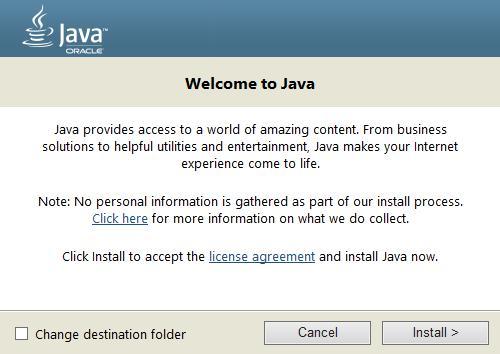

- #Java jar file run how to
- #Java jar file run zip file
- #Java jar file run update
- #Java jar file run archive
#Java jar file run how to
In this short tutorial, we will learn how to create and run a JAR file in Java. JAR files are a great way to share and distribute our Java code with others. class files and other metadata and resources needed for the project. If you have multiple Jar files, you can include them using this command: java -cp If they are in a subfolder, make sure to include the subfolder in the path. We can either treat it as a library so that others use it as a dependency. This section shows you how to invoke and run applets and applications that are packaged in JAR files.A JAR file is an archive that contains the classes and resources of a Java application. This section shows you how to update the contents of an existing JAR file by modifying its manifest or by adding files. When extracting files, the Jar tool makes copies of the desired files and writes them to the current directory, reproducing the directory structure that the files have in the archive. You can use the Jar tool to unpack a JAR file. You can display a JAR file's table of contents to see what it contains without actually unpacking the JAR file. This section shows you how to use the Jar tool to package files and directories into a JAR file. This section shows you how to perform the most common JAR-file operations, with examples for each of the basic features: Creating a JAR File To invoke an applet packaged as a JAR file Your JAR file contains an application that is to be started from the command line. press Ctrl-1 (or Ctrl-n if this is the n-th tool) to run the Create Jar File tool. Your JAR file contains an applet that is to be run inside a browser. use (again) the TicTacToe demo applet that ships with the JavaTM Development Kit. To run an application packaged as a JAR file (requires the Main-class manifest header) In Java, it is common to combine several classes in one. Your JAR file contains an applet that is to be run inside a browser. To extract specific files from a JAR file Because the Java Archive tool is invoked by using the jar command, this tutorial refers to it as 'the Jar tool'.Īs a synopsis and preview of some of the topics to be covered in this section, the following table summarizes common JAR file operations: Common JAR file operations Operation To perform basic tasks with JAR files, you use the Java Archive Tool provided as part of the Java Development Kit (JDK). When the command completes, I will see the output in my shell: 1. The -jar flags tells the java executable that we are providing it a jar file that contains the Java application with a static main method. These tasks are among the most common uses of JAR files, and you can realize many JAR file benefits using only these basic features.Įven if you want to take advantage of advanced functionality provided by the JAR file format such as electronic signing, you'll first need to become familiar with the fundamental operations. java -jar TechcoilRobotTxtDownloader.jar. To package this demo into a single JAR file named TicTacToe.jar, you would run this command from inside the TicTacToe directory: jar cvf TicTacToe.jar TicTacToe.class audio images The audio and images arguments represent directories, so the Jar tool will recursively place them and their contents in the JAR file. JAR files are packaged with the ZIP file format, so you can use them for tasks such as lossless data compression, archiving, decompression, and archive unpacking. In this quick tutorial, we're going to look at how we can run a JAR file from the command line. Replace the '
In this quick tutorial, we're going to look at how we can run a JAR file from the command line. Replace the '#Java jar file run archive
#Java jar file run update

#Java jar file run zip file


 0 kommentar(er)
0 kommentar(er)
